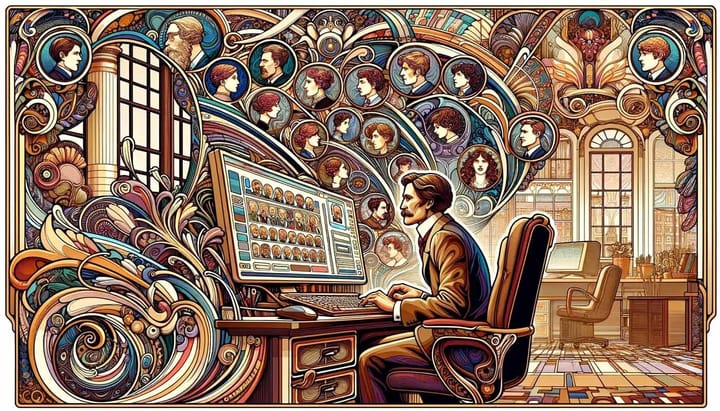Everything You Need to Know About Cross-Functional Teams
Here's everything you need to know about creating and managing cross-functional teams. Learn the benefits of breaking down silos, best practices for setting goals and expectations, and tips for maximizing innovation.

In today's fast-paced business environment, companies can't afford to work in silos. Cross-functional teams break down those silos by bringing together employees from different departments to collaborate toward a common goal.
As management expert Stephen Covey put it, "Interdependence is a higher value than independence."
When structured properly, cross-functional teams can lead to greater efficiency, innovation, and alignment with organizational objectives.
Here's what you need to know:
What Are Cross-Functional Teams?
A cross-functional team is a group of employees from different departments who come together to achieve a specific goal. For example, a new product development team might consist of team members from engineering, design, marketing, operations, and finance.
Each member brings unique skills, perspectives, and expertise gained from their regular departmental work. Together, they can tackle issues that normally fall through the cracks between siloed departments.
Why are Cross-Functional Teams Valuable?
There are several key benefits that come from bringing together diverse skill sets:
- Innovation - By collaborating with colleagues from other disciplines, team members get exposed to different perspectives. This promotes creative thinking and often leads to innovative solutions.
- Efficiency - Issues can be spotted and tackled early when you have the major stakeholders in the room. This avoids the lengthy back-and-forth of separate departments tackling issues in isolation.
- Strategic Alignment - Cross-functional teams ensure that projects align with overarching company goals instead of just departmental objectives.
- Status Quo Disruption - Silos can lead to groupthink and resistance to change. Teams comprised of different functions make it easier to challenge existing norms.
The Downsides of Cross-Functional Teams
While cross-functional teams offer many benefits, they also come with some potential pitfalls to be aware of:
- Conflicting Priorities - With team members juggling responsibilities to their functional department and the cross-functional team, priorities can become misaligned resulting in tension.
- Unclear Authority - Without defined guidelines on decision-making authority, teams can get bogged down trying to get approval from multiple department heads.
- Resource Constraints - Department leaders may be reluctant to allow their best people to dedicate time to cross-functional initiatives instead of core responsibilities.
- Lack of Accountability - With decisions being made as a team, individual accountability can become diluted unless roles are clearly defined.
- Cultural Resistance - Long-entrenched departmental silos can lead to an "us vs them" mentality that hinders cross-functional collaboration.
- Lack of Leadership - Without a strong leader setting objectives, managing conflict, and championing the team, cross-functional efforts often fizzle out.
- Poor Planning - When project plans and timelines are ambiguous, team members may have differing assumptions about priorities and success metrics.
While the challenges are real, they can be mitigated through thoughtful leadership and structure. The key is weighing the tradeoffs and maintaining alignment with company goals.
What Makes a Cross-Functional Team Effective?
While cross-functional teams offer many benefits, they require thoughtful structuring:
Clear Goals
Set objectives that tie directly to organizational strategy so the team understands how their work impacts the company's success.
Project Plan
Create a high-level timeline with milestones to keep team members aligned on deliverables and deadlines.
Encourage Team Identity
Foster a "one team" mentality instead of just being representatives of departments. Activities like off-site and social events can facilitate relationship building.
Authority & Hierarchy
Clearly define decision-making abilities and the hierarchy early on so there is no confusion on who has final sign-off.
Open Communication
Set norms and expectations for open dialogue between team members, especially when tackling thorny issues.
Embrace Conflict
Differing opinions are inevitable. Coach the team on having constructive debates focused on ideas rather than people.
Transparency
Be clear about how decisions will be made and share relevant information with the full team to build trust.
Cross-Functional Teams vs Functional Structures
Many companies organize their operations around functional departments like engineering, marketing, finance, and so on.
While specialization has some benefits, strict functional silos can also impede efficiency, innovation, and strategic alignment. Cross-functional teams aim to capture the upside of bringing diverse expertise together while mitigating the downsides of rigid functional structures.
Benefits of Cross-Functional Teams
- Break down barriers between departments
- Improve information sharing
- Promote creativity and innovation
- Align project goals with company strategy
- Enable quicker decision-making
Benefits of Functional Structures
- Deep specialization
- Career development within fields
- Consistent processes and reporting
- Individual accountability
As with most things, there are upsides and downsides to both approaches. More and more companies are recognizing the value of balancing functional structures with cross-functional collaboration.
The most successful organizations employ a mix of traditional departmentalization and project-specific cross-functional teams in order to capture the benefits of both. The key is setting clear guidelines around decision-making authority and resource allocation.
With the right balance, companies can encourage both specialization and collaboration - empowering innovation across the organization.
Key Takeaways
Cross-functional teams promote innovation, efficiency, and strategic alignment by breaking down organizational silos. However, they require thoughtful structuring around goals, plans, roles, decision-making, and norms of interaction.
When structured effectively, cross-functional teams can tackle the complex challenges of today's business environment better than hierarchical departments working in isolation. But they take work.


